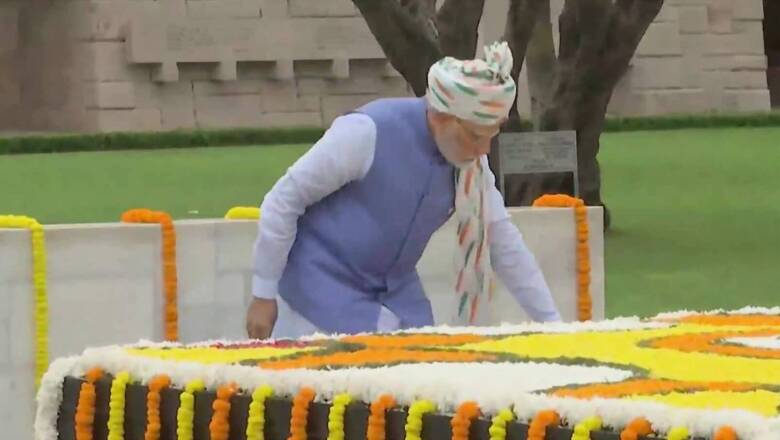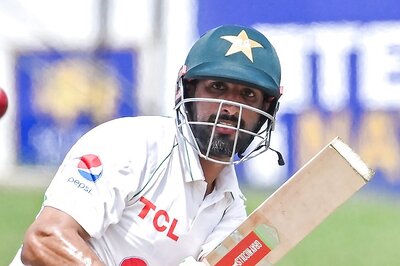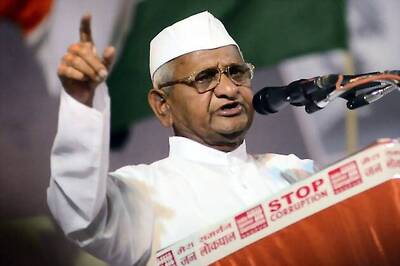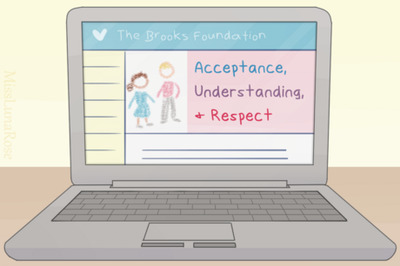
views
Prime Minister was on Monday seen sporting a white turban with saffron and green stripes, showcasing the shades of the ‘Tiranga’. PM Modi is known for his unique headgears on such occasions, and this year’s turban has a special message as India completes 75 years of Independence. Notably, the prime minister had also urged citizens of the country to use ‘Tiranga’ as their profile picture on social media accounts between August 2 and August 15.
The Centre had initiated the ‘Har Ghar Tiranga’ campaign this year in an effort to invoke the feeling of patriotism in the hearts of the people and promote awareness about the Tricolour.
Besides the white safa with tricolour stripes and a long trail, PM Modi wore a traditional kurta and churidar paired with a blue jacket and black shoes as he hoisted the national flag at the ramparts of the Red Fort and addressed the nation for the ninth consecutive time. The safa trail also had similar tricolour stripes as the headgear.
In the past too, the Prime Minister always made a statement with the choice of his headgears. Last year, he was seen partaking in the celebrations at Red Fort wearing a saffron and cream turban which included a long tail. In 2020, he donned a multi-coloured turban as he was spotted giving his sixth Independence Day speech. In 2014, he was seen bright red Jodhpuri bandhej turban. The next year, he opted for a turban which had multi-coloured criss-cross lines. In 2016, he was seen in a tie and dye turban.
Talking about the tricolour, Rashtriya Swayamsevak Sangh (RSS) joint general secretary Manmohan Vaidya said, “The Tricolour flag emerged in the political scenario in 1921. It was Gandhi ji’s idea to have a flag representing all major communities. Hence, a Tricolour flag with red (not saffron) at the bottom, green in the middle, and white at the top, representing Hindus, Muslims, and Christians.” Vaidya further told an news portal that the flag committee had recommended a rectangular saffron-colour flag with a blue charkha in the top corner.
Industrialist Naveen Jindal, who describes himself as a Tricolour crusader, has also backed PM Narendra Modi’s Har Ghar Tiranga campaign to mark the 75th year of India’s Independence. A two-time Congress MP, Jindal fought for the private citizen’s right to fly the Tranga and got the Flag Code changed twice.
The Flag Foundation of India (FFI), led by Jindal, praised the Centre’s decision to amend the 2002 National Flag Code, allowing manufacture and import of machine-made polyester flags. “The criticism of the addition of polyester to the amended Flag Code is out of ignorance. This amendment only reaffirms what was already clarified by the Ministry of Home Affairs in 2005,” FFI said in a statement.
It added, “It will give a boost to the ‘Har Ghar Tiranga” initiative’ of the Government of India and remove doubts from the minds of people. We welcome the amendment to the Flag Code of India.” Jindal also tweeted saying it has been his “dream to see every house displaying the National Flag”.
Read the Latest News and Breaking News here


















Comments
0 comment